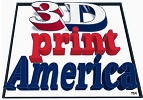Designing a candle mold using 3D CAD software gives you the freedom to create custom shapes and sizes. Below are some design considerations and filament options for your 3D printed candle mold:
1. Design Considerations:
· Size and Shape: Determine the desired dimensions and shape of your candle mold. Consider the type of candle you want to create, such as pillar, votive, or container candles. Ensure that the design allows for easy removal of the hardened wax.
· Draft Angles: Incorporate draft angles into your design. Draft angles are tapered angles on the vertical walls of the mold that allow for easy removal of the printed object or the mold itself. Typically, a draft angle of 1-3 degrees is sufficient to facilitate smooth demolding.
· Wall Thickness: Ensure that the walls of the mold are thick enough to provide sufficient strength and stability. A thicker wall helps to prevent deformation during the printing process and ensures durability when pouring hot wax. Aim for a wall thickness of at least 2-3 mm, depending on the size and complexity of the mold.
· Venting and Overflow Channels: Consider incorporating venting channels and overflow channels in the mold design. Venting channels help to release trapped air during the pouring process, ensuring a complete fill and reducing the risk of bubbles. Overflow channels provide a path for excess wax to escape, preventing overflows and maintaining the desired shape.
· Add the Fill Funnel:
o Determine the location and size of the fill funnel. Typically, the fill funnel is placed on the top of the mold to allow easy pouring of the molten wax.
o Create a hollow cylinder or cone-shaped structure extending from the top surface of the mold. The size and angle of the funnel should facilitate easy pouring without spilling or overflow.
o Ensure that the funnel has a sufficient opening to allow for easy filling but narrow enough to prevent wax leakage during the solidification process.
· Surface Finish: Pay attention to the surface finish of the mold. A smooth and even interior surface helps in achieving clean and detailed prints. Consider using post-processing techniques such as sanding or polishing to refine the surface further if necessary.
· Sturdy Base: Make sure to incorporate legs into your mold design or that is has wide enough footprint of sufficient strength to prevent the mold from toppling over as wax is poured in. Another good approach is to develop a separate base that will act as a pouring jig. Incorporate grooves or holes into your mold design that allows it to set into or slide onto your pouring jig. By creating a standardized reusable jig framework you can develop design(s) that accepts multiple molds of various shapes, either side by side or back to back or both. A carefully designed jig can produce a sturdier base and conserve on time and resources.
2. 3D Filament Selection:
· PLA (Polylactic Acid): PLA is a commonly used filament for candle molds due to its ease of use, low printing temperature, and wide availability. It has good dimensional accuracy and a smooth surface finish.
· PETG (Polyethylene Terephthalate Glycol): PETG is known for its durability and excellent heat resistance. It can withstand the temperatures involved in pouring hot wax and provides good strength and flexibility.
· HTPLA (High-Temperature PLA): HTPLA is a modified version of PLA that has been engineered to have improved heat resistance. It can withstand higher temperatures than regular PLA, making it suitable for candle molds that require higher pouring temperatures. HTPLA provides good printability and surface finish, similar to PLA, but with enhanced heat resistance properties.
· ABS (Acrylonitrile Butadiene Styrene): ABS is a strong and heat-resistant filament that can handle higher temperatures. It is suitable for candle molds that require exposure to hotter wax.
· ASA (Acrylonitrile Styrene Acrylate): ASA has similar properties to ABS but offers better resistance to weathering and UV radiation. It is a good choice for outdoor candle molds.
· PC (Polycarbonate): PC has high heat resistance, good chemical resistance, and produces a smooth surface finish. It also has some flexibility, making it easier to remove candles from the mold.
· HIPS (High Impact Polystyrene): HIPS is often used as a support material but can also be used for candle molds. It has good heat resistance and can be dissolved in d-Limonene, making support removal convenient. Depending on wax type, d-Limonene may soften or partially dissolve the surface of the candle.
When selecting a 3D filament for making candle molds, it’s crucial to consider the specific requirements of your candle-making process, such as pouring temperature and desired mold detail. Conducting small-scale tests with different 3D filaments and evaluating their performance can help you determine the best filament choice for your specific needs.
Additionally, regardless of the 3D filament chosen, applying a release agent or mold release spray to the printed molds can aid in the easy removal of the hardened wax.
· Smooth-On Universal Mold Release: Smooth-On is a well-known brand in the mold-making industry, and their Universal Mold Release is a popular choice. It provides a reliable and effective release for various mold materials, including 3D printed molds.
· Stoner E-497 Mold Release Spray: Stoner is another reputable brand that offers a range of mold release products. Their E-497 Mold Release Spray is a versatile option suitable for use with 3D printed molds.
Remember to always follow proper safety precautions, especially when handling hot materials. This article has assumed the reader is familiar with the steps and processes of making the candle itself, if you are not please seek further knowledge before attempting to do so.
May your 3D journey be well lit !


